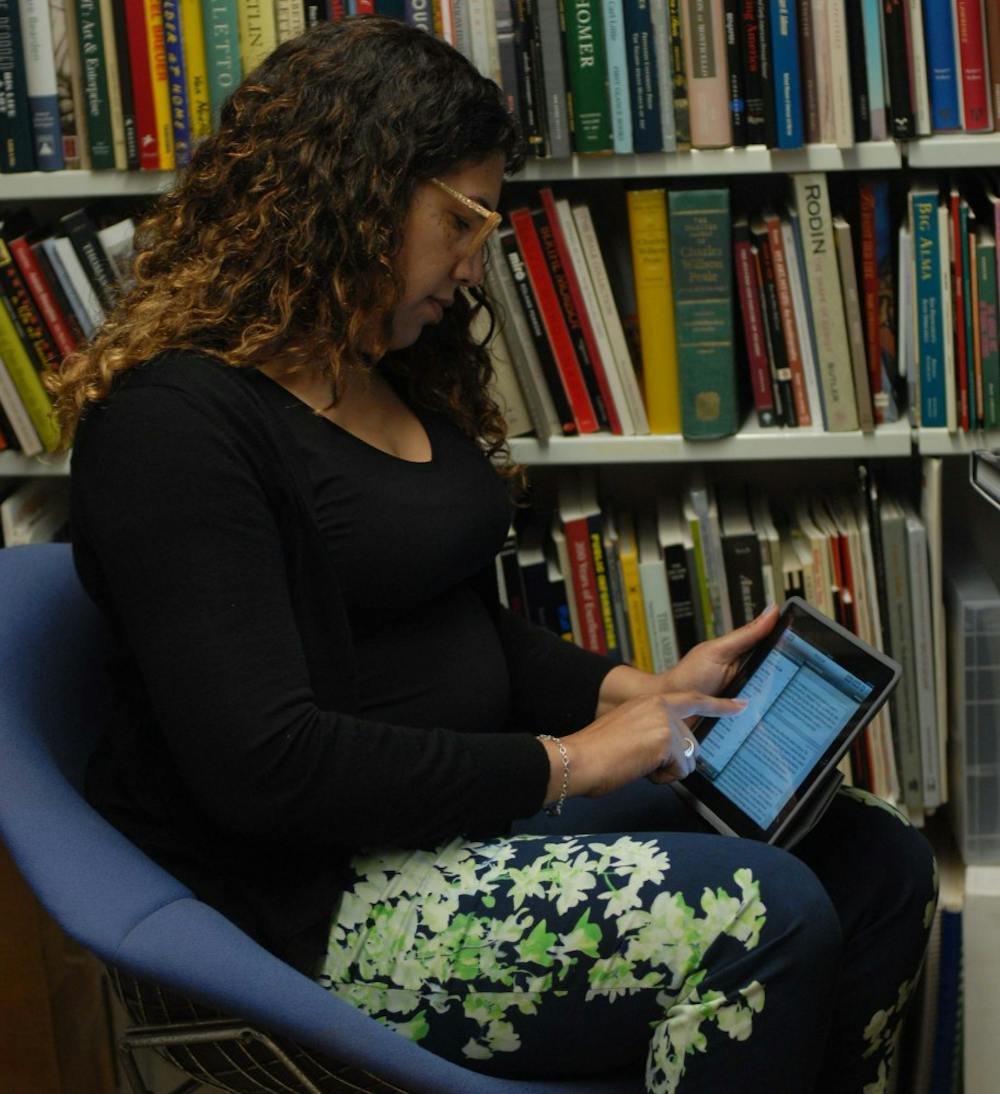After her students post about their weekly readings, Gwendolyn DuBois Shaw looks through their responses on her iPad.
Shaw, a professor of art history, uses Canvas’ SpeedGrader app on her tablet to quickly go through all of her students’ responses and then send them feedback on what they wrote.
“It’s very efficient,” she said. “For discussions, there’s a little window on the side where you can speak comments using the microphone on the iPad and have your comments posted” to a student’s assignment.
But this is just one of the new functions available through Canvas.
For Shaw, and several professors who have begun to use Canvas in the wake of the University’s switch to the new learning management system, these new capabilities have begun to make their way into this semester’s classes.
Related: Canvas to replace Blackboard this year
The Daily Pennsylvanian interviewed several professors and administrators to better understand what new functions are available and how they are currently being implemented in the classroom. These are five of the most-talked about:
1) Integration of video in courses
One of the perks of Canvas is that it allows users to post video assignments for their classes.
For Penn’s American Sign Language program, the use of videos on Canvas has allowed for improvements in ASL courses.
Whereas previous courses were restricted to written assignments, Canvas’ video function has allowed students to engage in online discussions in sign language.
Blackboard “really didn’t have a mechanism for online discussion using video,” ASL Program Coordinator Jami Fisher said.
Now, “students record themselves [speaking ASL] via the video recording feature on Canvas,” she added. “In upper level classes, we have discussions done through the video feature of ASL.”
Fisher added that if a student makes an error when they’re signing, she can make a video that addresses that error and shows the student how to make the proper sign.
Canvas “really has changed the way that we taught ASL,” Fisher said.
Related: University approves ASL/Deaf Studies minor
2) ‘Sensitivity to social media’
Canvas also “exploit[s] social media in interesting ways,” said Joseph Zucca, director for planning and communication at Penn Libraries.
For example, Canvas allows you to link your various social media accounts — including your LinkedIn, Twitter and Facebook — to your Canvas account. That way, you can have messages from Canvas forwarded to those accounts.
“When students set up their profiles [on Canvas], they can set up different ways about how they want to be contacted,” said Shaw, who was part of last semester’s pilot program.
“They can opt to be contacted through email [and also] through a text message, through Facebook, through Twitter,” she added.
Related: Wharton tests out webCafé replacement
3) Personalizing your profile
Canvas allows users to change their names on their account and personalize their accounts with a profile picture of themselves.
Shaw praised the ease with which students could change their names on Canvas.
“I had a student last term who was going through a major life change and he wanted to be called by a different name, and he was able to put that name in Canvas, which made his situation much easier,” she said.
As for profile pictures, Economics professor Rebecca Stein, whose ECON 001 has close to 700 students enrolled, also noted that it would be nice for students to have their pictures linked with their Canvas accounts.
“I wish that was integrated with the Penn InTouch database,” she said.
Related: Students weigh in on transition from webCafé to Canvas
4) SpeedGrader and Canvas apps
Since she teaches a course with a few hundred students enrolled, Stein finds Canvas’ SpeedGrader function useful.
SpeedGrader is a function of Canvas which allows one question from all assignments to be graded at once, and Stein said it has been extremely useful for her teaching assistants when they grade homework.
Shaw, who has downloaded both the SpeedGrader and Canvas apps on her iPad, also found the service useful.
Using the SpeedGrader app allows her to “correspond with the students about their postings in an efficient way,” Shaw said, “as opposed to having one window open with Canvas and the other open with Word or an email.”
Related: New online grading software provokes excitement, skepticism
5) Integrated calendar functionality
Currently, Canvas’ calendar function allows professors to list upcoming assignments and their due dates on Canvas. However, not all undergraduate schools use the same Canvas account, so a student in Wharton and the College of Arts and Sciences would have two separate accounts.
One of Penn’s goals is to centralize that information so that all undergraduates have one Canvas account, said Zucca, putting all coursework on one calendar.
Both Shaw and Fisher praised Canvas’ current calendar capabilities.
“I have my readings and each week’s activities embedded into the calendar function,” Shaw said. The ability to download that calendar on her iCal was an “enormous help,” and she hopes that her students do the same, she added.
Fisher said that she was a “big fan” of the calendar function and the way things are integrated on Canvas.
However, Stein had philosophical objections to the use of the calendar.
“The calendar creates the illusion that learning is goal-oriented and directed only to the time-sensitive tasks,” she said. “I think learning is something we should be always engaged in every day.”



